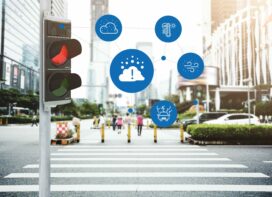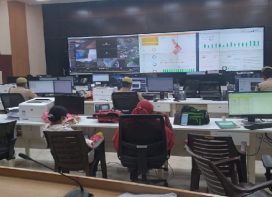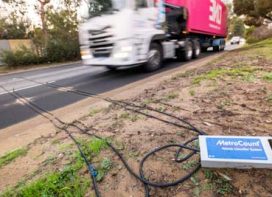 An IPS officer of the 1988 batch, Sanjay Arora, Additional Police Commissioner — Traffic, Chennai, has been in and out of traffic assignments including a five year term with Indo Tibetan Border Police. After taking charge as ACP (Traffic) in May 2011, he has been on a fast track to solve many of Chennai’s traffic problems with the Chief Minister sanctioning additional manpower of 1000 police personnel in August and Integrated Traffic Management System in October last year.
An IPS officer of the 1988 batch, Sanjay Arora, Additional Police Commissioner — Traffic, Chennai, has been in and out of traffic assignments including a five year term with Indo Tibetan Border Police. After taking charge as ACP (Traffic) in May 2011, he has been on a fast track to solve many of Chennai’s traffic problems with the Chief Minister sanctioning additional manpower of 1000 police personnel in August and Integrated Traffic Management System in October last year.
A comprehensive traffic management plan seems to be helping you to maintain the traffic chaos during construction activities of Chennai Metro.
I will not take full credit for it. The Chennai Metro Rail Limited (CMRL) and the Traffic Police together have been able to do quite a bit. CMRL has stipulated that the contractors for each segment have to design their work in such a way that at least two lane space is available to traffic. Each contractor has been asked to propose this traffic plan which the metro rail submits to the traffic police. We study the plans extensively and if required, modify them in terms of redesigning the pavements, removing the median or shifting the median to one side, etc., so that we have a very balanced road width available to us after the work gets started. Changes are not possible. We have gone in for diversions or one way entry. We are taking up major roads like the Mount Road where we have a number of underground stations coming up. Each location where an underground station is coming up has been treated as a ‘segment’.
What new technologies have been introduced by Chennai traffic police?
One of the most successful projects has been the e-challan which we launched in June 2011. The system envisages that each of the enforcement officers is given a handheld device which is a kind of a mini computer in itself with GPRS connectivity to the control room server that houses records of all the 32 lakh vehicles in the city. It has a camera, a printer, built-in GPS and the capability to read smart cards. So once the enforcement officer flags down a vehicle, he needs to punch in the vehicle registration number which goes straight to the server.
The server has the database of all the vehicles registered with the transport department. So the description of the vehicle is thrown back on the handheld set of the field officer. If the description does not match, it could be a stolen vehicle and investigations could commence. If the number matches, then the officer proceeds with the various drop down menus to choose the “multiple offences” which get locked in the separate database of the offences.
 Earlier, in the manual system, we had no facility to check whether the people we were charging had made motor vehicle violations in the past. Before this system was in place, we were doing about 4000-4200 cases a day on an average and collecting about `70 lakh a month as fine. Now, at about 9500, we are booking nearly double the cases and have collected `1.8 crore in October. Since each traffic policeman is given a unique password to operate the hand-held device, there will be greater transparency in accounting for the fines collected.
Earlier, in the manual system, we had no facility to check whether the people we were charging had made motor vehicle violations in the past. Before this system was in place, we were doing about 4000-4200 cases a day on an average and collecting about `70 lakh a month as fine. Now, at about 9500, we are booking nearly double the cases and have collected `1.8 crore in October. Since each traffic policeman is given a unique password to operate the hand-held device, there will be greater transparency in accounting for the fines collected.
The e-challan system also helps in creating a strong database and controlling vehicle theft. With its help, we will be able to record a 20% increase in fines this year.
Do you also take the help of cameras?
The cameras in general monitor tell about the traffic flow. They are not integrated with the e-challans at present. But at the recent annual conference, the Chief Minister of Tamil Nadu gave her sanction to implement an Integrated Traffic Management System. The system envisages using automatic number plate reading cameras that, along with the video analytic software, will be capable of generating challans without human intervention. So we hope the system would be in place in another eight to nine months.
The system would aim at automising both the regulation and enforcement of traffic in terms of emergency services like ambulances and fire brigades and providing information to the motorists. From the traffic junctions, the video would flow to the control room where the video analytic application would be at work. The same connectivity would to be utilised to control the signals as well like turning the signal green on spotting an ambulance.
 TrafficInfraTech Magazine Linking People Places & Progress
TrafficInfraTech Magazine Linking People Places & Progress


